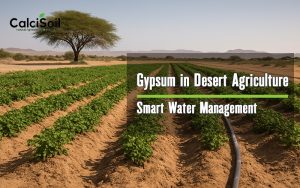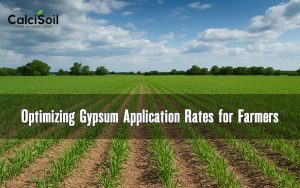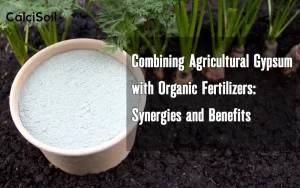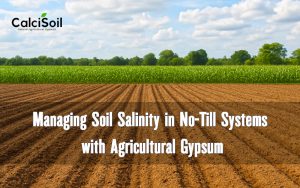
Agricultural gypsum application benefits
Investigation of the mechanism of agricultural gypsum in reducing the soil salinity of saffron fields shows that there is no time limit for adding gypsum to the soil and it can be done at any time. We should also add gypsum to the soil when heavy irrigation is possible. If the addition of gypsum to the soil is not followed by heavy irrigation, the washed gypsum will accumulate in the upper depths of the soil (area of root activity).
Accumulation of gypsum in the upper layers acts as a limiting layer if it exceeds 40%. In cases where the gypsum accumulates in the depth of the saffron root area, the saffron root changes its direction one to two centimeters from this layer. This is why gypsum needs to be added gradually over two to three years in order to improve the salinity of farm soils.
why is using agricultural gypsum recommended?
Agricultural gypsum contains the two widely used elements of calcium and sulfur. Due to the presence of sulfur in water and soil sources, calcium supply is more important, because its deficiency in the soil causes physiological problems of absorption and transfer in the plant and disturbs the balance between calcium and magnesium in favor of magnesium. Therefore, it is recommended to use this substance gradually over two to three years.
Actually the use of gypsum in saffron fields should be done gradually over two to three years for several reasons:
1. Saffron is a perennial crop: Saffron is a perennial crop that can be grown for several years in the same field. This means that any changes made to the soil will have a long-term impact on the crop. By applying gypsum gradually over several years, the soil can adjust to the changes in soil chemistry and structure more slowly, which can reduce the risk of negative impacts on the crop.
2. Avoiding sudden changes in soil chemistry: Saffron is a relatively sensitive crop and can be negatively impacted by sudden changes in soil chemistry. Applying too much gypsum at once can lead to a rapid increase in soil pH and the release of excess nutrients, which can be harmful to the crop. By applying gypsum gradually over several years, the soil can adjust to the changes in soil chemistry more slowly, which can reduce the risk of negative impacts on the crop.
3. Preventing the soil compaction: Applying too much of agricultural gypsum at once can also lead to the soil compaction, which it can reduce the water infiltration and also the root growth. By applying the agricultural gypsum gradually over several years, the soil can adjust to the changes happens in the soil structure more slowly, which can prevent the soil compaction.
4. Maximizing the benefits of gypsum: Applying gypsum gradually over several years can help to maximize the benefits of the amendment. By applying gypsum in smaller doses over several years, the soil can continue to benefit from theimproved soil structure, increased nutrient availability, and reduced soil salinity over a longer period of time, which can lead to improved saffron growth and yield.







